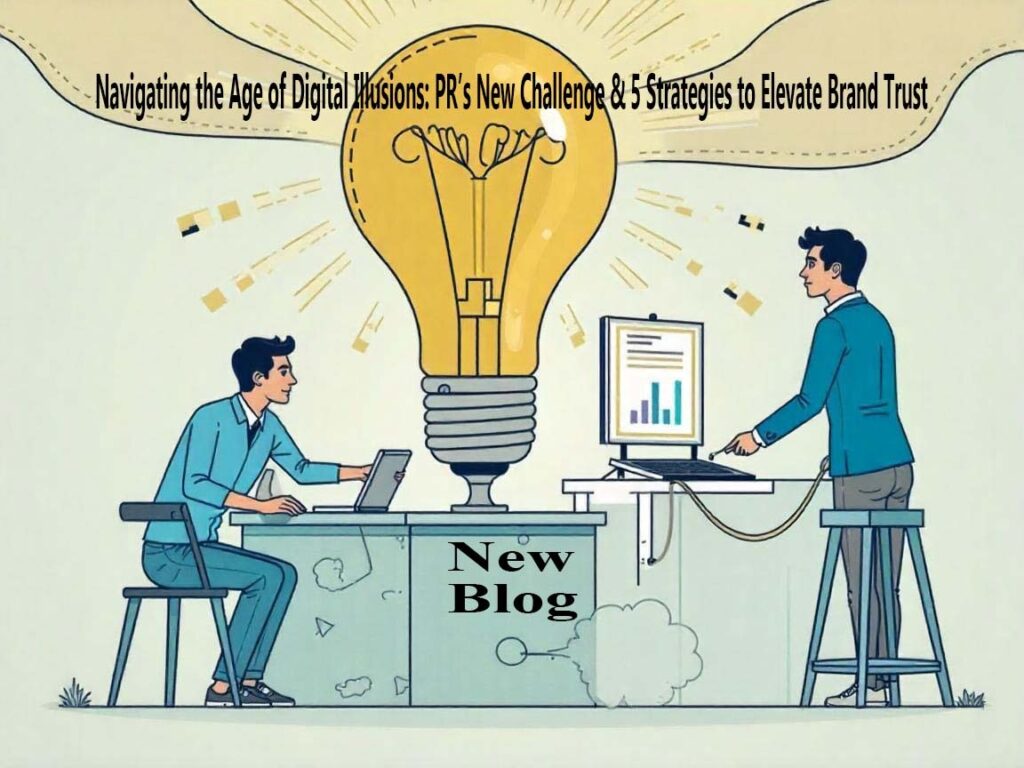Imagine scrolling through your feed and stumbling upon a video of your company’s CEO announcing a major acquisition—except it never happened. Or seeing your favorite celebrity passionately endorsing an energy drink they’ve never tasted (and probably never would). We’ve already seen stars promoting tobacco brands, sugar-loaded energy drinks, and questionable processed foods, despite the known health risks. But now, thanks to AI-powered manipulations, even reality isn’t safe from distortion.
Welcome to the era of digital illusions, where seeing isn’t always believing, and trust is the most valuable currency.
The Growing PR Crisis: Fake Content and Reputation Risks
AI-generated media that mimic real people’s voices and faces are becoming more sophisticated—and more dangerous. The ability to create hyper-realistic but entirely false content threatens brands, public figures, and entire industries.
Why does this matter?
- A well-placed fake video can ruin reputations overnight
- Misinformation spreads six times faster than truth online
- Consumer trust is already fragile—manipulated content only makes it worse
But it’s not all doom and gloom. Just as deceptive technology evolves, so do strategies to combat it. Let’s talk solutions.
PR’s New Playbook: 5 Strategies to Build & Protect Brand Trust
1. Radical Transparency: Own Your Narrative
If your brand is leveraging AI for content creation, be upfront about it. A simple disclosure like “This content was AI-assisted” builds credibility. Transparency also means addressing misinformation swiftly—waiting too long can turn a minor issue into a major crisis.
Example: When OpenAI’s ChatGPT became mainstream, many brands disclosed AI-generated content usage, reinforcing authenticity rather than hiding it.
2. AI-Powered Defense: Fight Fire with Fire
Fake content isn’t just a problem—AI is also the solution. Invest in AI-driven tools that detect and flag fake content before it spreads.
Example: The BBC and Reuters have incorporated AI detection tools to verify footage before airing, preventing manipulated content from gaining traction.
3. Crisis Simulation: Be Ready Before Disaster Strikes
A crisis plan that doesn’t account for AI-generated deception is outdated. Simulate potential content manipulation crises and train teams on rapid response strategies.
Example: A tech company tested its PR team with a fake news scenario—preparing them for real-world misinformation attacks.
4. Media Literacy Campaigns: Educate Your Audience
Misinformation thrives when audiences lack the tools to identify it. Leading brands are now focusing on educating consumers about fake news and AI-generated deception.
Example: Microsoft launched media literacy initiatives to teach users how to spot manipulated content, reinforcing its brand as a trusted tech leader.
5. Human Connection: The Ultimate Trust Builder
People trust people, not logos. In an era of AI-driven content, doubling down on human-led interactions—live videos, behind-the-scenes content, real-time engagement—can help brands maintain authenticity.
Example: Nike’s leadership frequently engages in live Q&A sessions, reinforcing authenticity and minimizing the impact of potential fake content.
The Future of PR in a Digitally Manipulated World
PR professionals must evolve from brand storytellers to digital truth-keepers. The key to thriving in this era isn’t just about defense—it’s about actively shaping the conversation. By embracing transparency, leveraging AI, and prioritizing human connection, brands can turn the fake content crisis into an opportunity to strengthen trust like never before.
As the PR industry continues to evolve, one thing is certain: the brands that prioritize trust, transparency, and authenticity will be the ones that thrive in this new era. Will yours be one of them?
